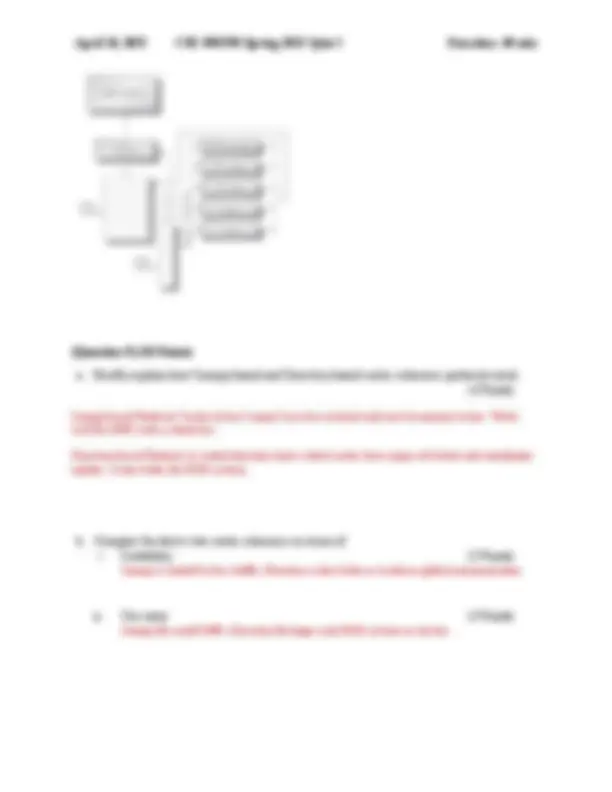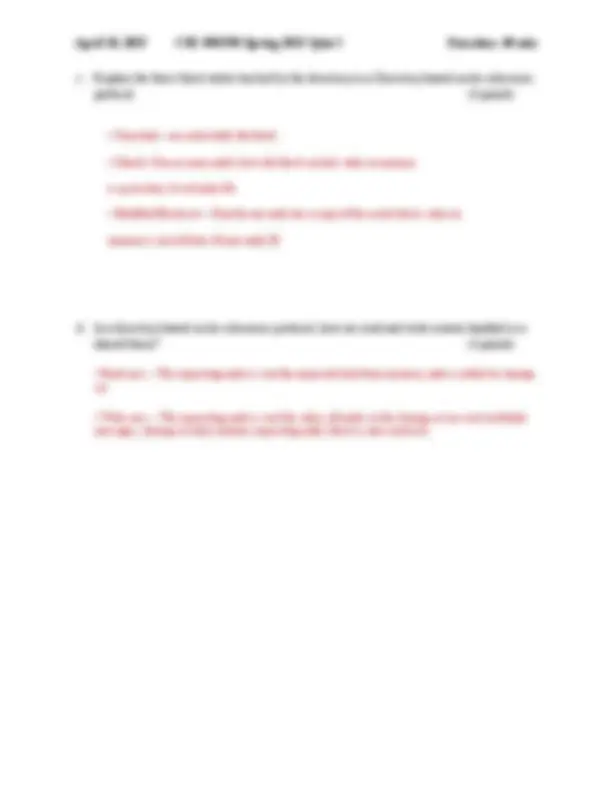





Study with the several resources on Docsity

Earn points by helping other students or get them with a premium plan


Prepare for your exams
Study with the several resources on Docsity

Earn points to download
Earn points by helping other students or get them with a premium plan
Community
Ask the community for help and clear up your study doubts
Discover the best universities in your country according to Docsity users
Free resources
Download our free guides on studying techniques, anxiety management strategies, and thesis advice from Docsity tutors
CSE490-590_Quiz3 | CSE 490/590 – Quiz 3 –2025/2026|Answered 100%
Typology: Quizzes
1 / 5

This page cannot be seen from the preview
Don't miss anything!




Instructions:
[Question 1] (6 Points) Referring to Flynn’s Taxonomy in Computer architecture, explain each, their benefits and possible applications. a. SISD SISD: One processor executes one instruction on one data item at a time. Simple, used in traditional CPUs. b. SIMD SIMD: One instruction operates on multiple data items in parallel. Efficient for vector/matrix processing, used in GPUs. c. MIMD MIMD: Multiple processors execute different instructions on different data simultaneously. Supports multitasking and parallelism in multicore systems. [Question 2] (8 Points) What are centralized shared memory multiprocessors (SMP) and Distributed Memory multiprocessors (DSM)? Mention their key features and differences. SMP (Centralized Shared Memory Multiprocessors): All processors share a single memory. Easy to program, but less scalable due to memory bottlenecks. DSM (Distributed Shared Memory Multiprocessors): Each processor has its own local memory, but logically shared. Better scalability, but complex memory access and coherence. [Question 3] (8 Points 6+2) Explain the concept of gather-scatter operation. (6 points) Gather: Collects non-contiguous data from memory into a single vector register. Scatter: Distributes elements from a vector register to non-contiguous memory addresses. Useful for sparse matrix or irregular memory accesses. Explain Stride. (2 points)
[Question 5] (18 Points) a. Briefly explain how Snoopy-based and Directory-based cache coherence protocols work. (4 Points) Snoopy-based Protocol: Caches listen ("snoop") on a bus to detect and react to memory writes. Works well for SMPs with a shared bus. Directory-based Protocol: A central directory tracks which caches have copies of a block and coordinates updates. Scales better for DSM systems. b. Compare the above two cache coherence in terms of: i. Scalability (3 Points) Snoopy is limited by bus traffic; Directory scales better as it reduces global communication. ii. Use cases (3 Points) Snoopy for small SMPs; Directory for large-scale DSM systems or clusters.
c. Explain the three block states tracked by the directory in a Directory-based cache coherence protocol. (4 points)